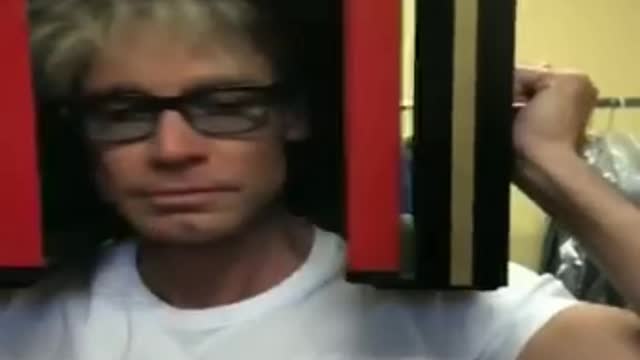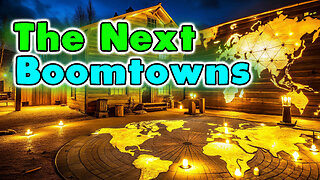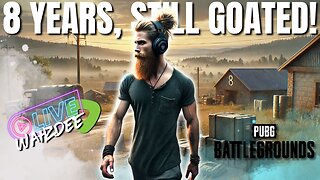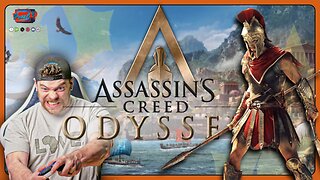Premium Only Content

IS THIS SCIENCE OR MAGIC?
The Science of Magic
Explore why magic is a unique tool for gaining new insights into human cognition, neurobiology, and behaviour.
OVERVIEW:
The Science of Magic
Magic has become the latest investigative tool for scientists exploring human cognition, neurobiology, and behaviour. Across Canada, the US and Europe, our film follows researchers who are bringing magicians’ tricks into the laboratory. With impossible magic, amazing facts, and opportunities for viewers to participate in the magic, this extraordinary exploration peeks behind the curtain into a fascinating world where ancient magic meets modern science.
Canadian magician and executive director of the arts organization Magicana, Julie Eng not only mystifies us with magic, she also takes us to Montreal’s McGill University to meet Jay Olson. He is one of the scientists spearheading this novel and powerful approach to experimental psychology. On the streets of Montreal Julie and Jay use card tricks to help us understand how magic can be used to explore human consciousness. But these simple tricks have given way to more elaborate experiments. We join Jay at the Montreal Neurological Institute for an extraordinary demonstration involving an MRI machine that can apparently not only read minds but can even use its electromagnetic fields to manipulate your most private thoughts.
FROM THE FILM: Magician Julie Eng hits the streets to perform a magic trick.
While investigating vision and traffic accidents professor Ronald Rensink at The University of British Columbia discovered an intriguing phenomenon known as “change blindness”. This refers to how a small distraction (like a splash of mud on the windshield) can blind a driver to seeing something that should be obvious (like the freight train in the path of a car). This interest in how we can miss things that are right in front of our eyes led professor Rensink into the world of magic. The ability of conjurors to trick normal perception offered him new insights and new ways of studying these questions. We join professor Rensink as he, and Swedish magician Tom Stone, discuss new experiments to study how our senses are fooled and what science can learn from magic.
In the US we meet with professor Anthony Barnhart. He’s a magician turned scientist who is using ancient knowledge to provide new insights into why – even when there are no distractions — we sometimes don’t see what’s right under our noses. We also meet Professor Amory Danek who is using the conjuror’s craft to study creativity and the “Aha!” moment when we get a sudden insight into how a problem can be solved.
We travel to London England for the first meeting of the Science and Magic Association (SOMA) where Gustav Kuhn conducts a study that tracks the eye movements of the magician’s audience. We see tricks that fool us despite nothing actually happening, as well as demonstrations that reveal we can be blind even to our own choices.
As surprising as many of the magic tricks are, the really big shock comes when we realize that as Julie tells us, just before she vanishes, that it’s our own brains that are the magicians — weaving reality out of fleeting impressions.
Colourful and compelling, our film takes a critical and engaging look at the fascinating facts revealed when you see the human mind through the eyes of a magician.
Magic
Magic, sometimes stylized as magick, is the application of beliefs, rituals or actions employed in the belief that they can subdue or manipulate natural or supernatural beings and forces. Magic, necromancy, sorcery, witchcraft imply producing results through mysterious influences or unexplained powers. Magic may have glamorous and attractive connotations; the other terms suggest the harmful and sinister. Magic is an art employing some occult force of nature: A hundred years ago television would have seemed to be magic. Necromancy is an art of prediction based on alleged communication with the dead (it is called “the black art,” because Greek nekrós, dead, was confused with Latin niger, black): Necromancy led to violating graves. Sorcery, originally divination by casting lots, came to mean supernatural knowledge gained through the aid of evil spirits, and often used for evil ends: spells and charms used in sorcery. Witchcraft especially suggests a malign kind of magic, often used against innocent victims: Those accused of witchcraft were executed.
-
 3:14
3:14
KERO
4 years agoScience Sunday: The magic of refraction
20 -
 LIVE
LIVE
Dear America
10 hours agoRINOS Vote WITH Dems Against Trump Tariffs + Girl Refuses To Compete With Biological Male?!
2,921 watching -
 1:29:02
1:29:02
Game On!
14 hours ago $1.37 earnedAntonio Brown was RIGHT! Rodgers signing with Steelers is IMMINENT!
5.25K3 -
 10:18
10:18
Friday Beers
13 hours agoWe Became the Highest Paid Street Performers in Los Angeles
19.5K11 -
 19:01
19:01
World2Briggs
12 hours ago $5.29 earnedMove Here Before It’s Too Late! 10 Future Boomtowns in the U.S.
22.3K10 -
 8:50
8:50
The Rad Factory
19 hours ago $5.07 earnedShifter Kart on Snow Tracks Rips City Streets
21K12 -
 2:29:58
2:29:58
Wahzdee
4 hours agoPUBG is 8 Years Old & Still Beats Every Other BR 🤷♂️🎯
22.7K5 -
 LIVE
LIVE
PudgeTV
10 hours ago🟠 Gaming on Rumble | Assassins Creed: Odyssey
209 watching -
 7:12
7:12
MichaelMotamedi
19 hours ago $1.28 earnedInside the Sacred World of Rastafarian Food
21.9K5 -
 11:24
11:24
LFA TV
1 day agoARTIFICIAL INTELLIGENCE SAYS J6 JUDGES ARE CORRUPT!
27.3K6